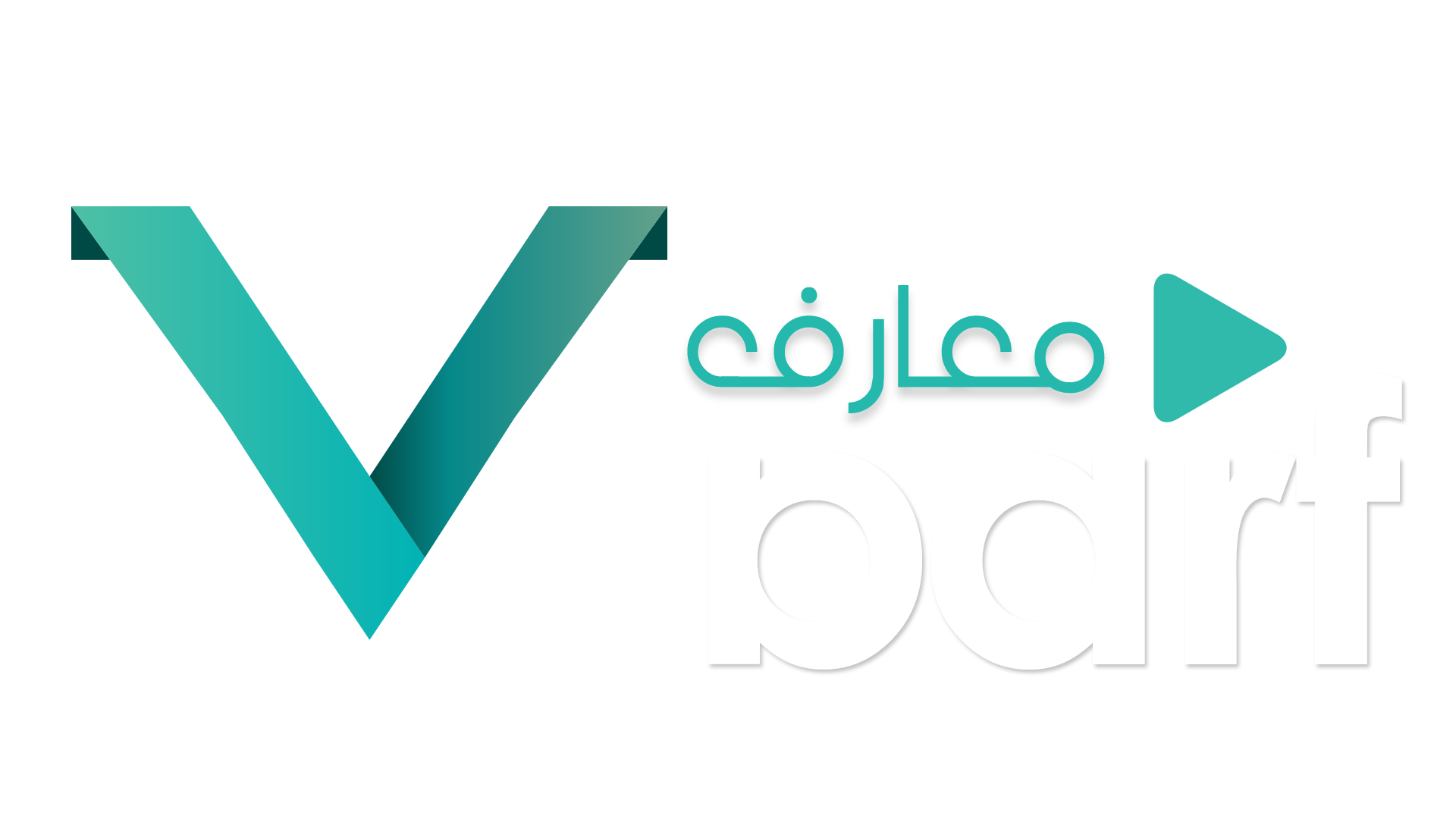
About Digital Marketing Course
What is digital marketing?
Digital marketing, also called online marketing, is the promotion of brands to connect with potential customers using the internet and other forms of digital communication. This includes not only email, social media, and web-based advertising, but also text and multimedia messages as a marketing channel.
Essentially, if a marketing campaign involves digital communication, it's digital marketing.
Why is digital marketing important?
Any type of marketing can help your business thrive. However, digital marketing has become increasingly important because of how accessible digital channels are.
From social media to text messages, there are many ways to use digital marketing tactics in order to communicate with your target audience. Additionally, digital marketing has minimal upfront costs, making it a cost-effective marketing technique for small businesses.
B2B versus B2C digital marketing
Digital marketing strategies work for B2B (business to business) as well as B2C (business to consumer) companies, but best practices differ significantly between the 2. Here's a closer look at how digital marketing is used in B2B and B2C marketing strategies.
● B2B clients tend to have longer decision-making processes, and thus longer sales funnels. Relationship-building strategies work better for these clients, whereas B2C customers tend to respond better to short-term offers and messages.
● B2B transactions are usually based on logic and evidence, which is what skilled B2B digital marketers present. B2C content is more likely to be emotionally-based, focusing on making the customer feel good about a purchase.
● B2B decisions tend to need more than 1 person's input. The marketing materials that best drive these decisions tend to be shareable and downloadable. B2C customers, on the other hand, favor one-on-one connections with a brand.
Of course, there are exceptions to every rule. A B2C company with a high-ticket product, such as a car or computer, might offer more informative and serious content. As a result, your digital marketing strategy always needs to be geared toward your own customer base, whether you're B2B or B2C.
Take a look at your current audience to create well-informed and targeted online marketing campaigns. Doing so ensures your marketing efforts are effective and you can capture the attention of potential customers.
The benefits of digital marketing
Digital marketing has become prominent largely because it reaches such a wide audience of people. However, it also offers a number of other advantages that can boost your marketing efforts. These are a few of the benefits of digital marketing.
A broad geographic reach
When you post an ad online, people can see it no matter where they are (provided you haven’t limited your ad geographically). This makes it easy to grow your business's market reach and connect with a larger audience across different digital channels.
Cost efficiency
Digital marketing not only reaches a broader audience than traditional marketing but also carries a lower cost. Overhead costs for newspaper ads, television spots, and other traditional marketing opportunities can be high. They also give you less control over whether your target audiences will see those messages in the first place.
With digital marketing, you can create just 1 content piece that draws visitors to your blog as long as it's active. You can create an email marketing campaign that delivers messages to targeted customer lists on a schedule, and it's easy to change that schedule or the content if you need to do so.
When you add it all up, digital marketing gives you much more flexibility and customer contact for your ad spend.
Quantifiable results
To know whether your marketing strategy works, you have to find out how many customers it attracts and how much revenue it ultimately drives. But how do you do that with a non-digital marketing strategy?
There's always the traditional option of asking each customer, “How did you find us?"
Unfortunately, that doesn't work in all industries. Many companies don't get to have one-on-one conversations with their customers, and surveys don't always get complete results.
With digital marketing, results monitoring is simple. Digital marketing software and platforms automatically track the number of desired conversions that you get, whether that means email open rates, visits to your home page, or direct purchases.
Easier personalization
Digital marketing allows you to gather customer data in a way that offline marketing can't. Data collected digitally tends to be much more precise and specific.
Imagine you offer financial services and want to send out special offers to internet users people who have looked at your products. You know you'll get better results if you target the offer to the person's interest, so you decide to prepare 2 campaigns. One is for young families who have looked at your life insurance products, and the other is for millennial entrepreneurs who have considered your retirement plans.
How do you gather all of that data without automated tracking? How many phone records would you have to go through? How many customer profiles? And how do you know who has or hasn't read the brochure you sent out?
With digital marketing, all of this information is already at your fingertips.
More connection with customers
Digital marketing lets you communicate with your customers in real-time. More importantly, it lets them communicate with you.
Think about your social media strategy. It's great when your target audience sees your latest post, but it's even better when they comment on it or share it. It means more buzz surrounding your product or service, as well as increased visibility every time someone joins the conversation.
Interactivity benefits your customers as well. Their level of engagement increases as they become active participants in your brand's story. That sense of ownership can create a strong sense of brand loyalty.
Easy and convenient conversions
Digital marketing lets your customers take action immediately after viewing your ad or content. With traditional advertisements, the most immediate result you can hope for is a phone call shortly after someone views your ad. But how often does someone have the time to reach out to a company while they're doing the dishes, driving down the highway, or updating records at work?
With digital marketing, they can click a link or save a blog post and move along the sales funnel right away. They might not make a purchase immediately, but they’ll stay connected with you and give you a chance to interact with them further.
How to create a digital marketing strategy>
For many small businesses and beginner digital marketers, getting started with digital marketing can be difficult. However, you can create an effective digital marketing strategy to increase brand awareness, engagement, and sales by using the following steps as your starting point.
Set SMART goals
Setting specific, measurable, achievable, relevant, and timely (SMART) goals is crucial for any marketing strategy. While there are many goals you may want to achieve, try to focus on the ones that will propel your strategy forward instead of causing it to remain stagnant.
Identify your audience
Before starting any marketing campaign, it’s best to identify your target audience. Your target audience is the group of people you want your campaign to reach based on similar attributes, such as age, gender, demographic, or purchasing behavior. Having a good understanding of your target audience can help you determine which digital marketing channels to use and the information to include in your campaigns.
Create a budget
A budget ensures you’re spending your money effectively towards your goals instead of overspending on digital marketing channels that may not provide the desired results. Consider your SMART goals and the digital channel you’re planning to use to create a budget.
Select your digital marketing channels
From content marketing to PPC campaigns and more, there are many digital marketing channels you can use to your advantage. Which digital marketing channels you use often depends on your goals, audience, and budget.
Refine your marketing efforts
Make sure to analyze your campaign's data to identify what was done well and areas for improvement once the campaign is over. This allows you to create even better campaigns in the future. With the help of digital technologies and software, you can obtain this data in an easy-to-view dashboard.
Course Staff

حول دورة التسويق الالكتروني
ما هو التسويق الرقمي؟
التسويق الرقمي ، الذي يُطلق عليه أيضًا التسويق عبر الإنترنت ، هو الترويج للعلامات التجارية للتواصل مع العملاء المحتملين باستخدام الإنترنت وأشكال الاتصال الرقمية الأخرى. لا يشمل ذلك البريد الإلكتروني ووسائل التواصل الاجتماعي والإعلانات القائمة على الويب فحسب ، بل يشمل أيضًا الرسائل النصية ورسائل الوسائط المتعددة كقناة تسويقية.
بشكل أساسي ، إذا كانت الحملة التسويقية تتضمن اتصالات رقمية ، فهي تسويق رقمي.
ما سبب أهمية التسويق الرقمي؟
يمكن لأي نوع من أنواع التسويق أن يساعد في ازدهار عملك. ومع ذلك ، أصبح التسويق الرقمي مهمًا بشكل متزايد بسبب مدى سهولة الوصول إلى القنوات الرقمية.
من وسائل التواصل الاجتماعي إلى الرسائل النصية ، هناك العديد من الطرق لاستخدام أساليب التسويق الرقمي للتواصل مع جمهورك المستهدف. بالإضافة إلى ذلك ، يتميز التسويق الرقمي بحد أدنى من التكاليف الأولية ، مما يجعله أسلوب تسويق فعال من حيث التكلفة للشركات الصغيرة.
B2B مقابل التسويق الرقمي بين B2C
تعمل استراتيجيات التسويق الرقمي مع B2B (شركة إلى أعمال) وكذلك شركات B2C (من الأعمال إلى المستهلك) ، ولكن أفضل الممارسات تختلف اختلافًا كبيرًا بين 2. فيما يلي نظرة فاحصة على كيفية استخدام التسويق الرقمي في استراتيجيات التسويق بين الشركات والمؤسسات.
يميل عملاء B2B إلى امتلاك عمليات اتخاذ قرار أطول ، وبالتالي مسارات مبيعات أطول. تعمل استراتيجيات بناء العلاقات بشكل أفضل مع هؤلاء العملاء ، بينما يميل عملاء B2C إلى الاستجابة بشكل أفضل للعروض والرسائل قصيرة الأجل.
عادةً ما تستند معاملات B2B إلى المنطق والأدلة ، وهو ما يقدمه مسوقو B2B المهرة. من المرجح أن يكون محتوى B2C مستندًا إلى عاطفية ، مع التركيز على جعل العميل يشعر بالرضا عن الشراء.
تميل قرارات B2B إلى الحاجة إلى أكثر من مساهمة شخص واحد. تميل المواد التسويقية التي تقود هذه القرارات إلى أن تكون قابلة للمشاركة وقابلة للتنزيل. من ناحية أخرى ، يفضل عملاء B2C الاتصالات الفردية مع العلامة التجارية.
بالطبع، هناك استثناءات لكل قاعدة. قد تقدم شركة B2C التي لديها منتج عالي التكلفة ، مثل سيارة أو كمبيوتر ، محتوى أكثر إفادة وجدية. نتيجة لذلك ، تحتاج إستراتيجية التسويق الرقمي الخاصة بك دائمًا إلى أن تكون موجهة نحو قاعدة العملاء الخاصة بك ، سواء كنت B2B أو B2C.
ألق نظرة على جمهورك الحالي لإنشاء حملات تسويقية على الإنترنت ومستنيرة ومستهدفة. يضمن القيام بذلك أن تكون جهودك التسويقية فعالة ويمكنك جذب انتباه العملاء المحتملين.
فوائد التسويق الرقمي
أصبح التسويق الرقمي بارزًا إلى حد كبير لأنه يصل إلى مثل هذا الجمهور الواسع من الناس. ومع ذلك ، فإنه يوفر أيضًا عددًا من المزايا الأخرى التي يمكن أن تعزز جهودك التسويقية. هذه بعض فوائد التسويق الرقمي.
مدى جغرافي واسع النطاق
عند نشر إعلان عبر الإنترنت ، يمكن للأشخاص رؤيته بغض النظر عن مكان وجودهم (بشرط ألا تقيد إعلانك جغرافيًا). هذا يجعل من السهل توسيع نطاق وصول نشاطك التجاري إلى السوق والتواصل مع جمهور أكبر عبر قنوات رقمية مختلفة.
كفاءة التكلفة
لا يصل التسويق الرقمي إلى جمهور أوسع من التسويق التقليدي فحسب ، بل يحمل أيضًا تكلفة أقل. يمكن أن تكون التكاليف العامة لإعلانات الصحف والنقاط التليفزيونية وفرص التسويق التقليدية الأخرى مرتفعة. كما أنها تمنحك تحكمًا أقل في ما إذا كان جمهورك المستهدف سيرى هذه الرسائل في المقام الأول.
باستخدام التسويق الرقمي ، يمكنك إنشاء جزء محتوى واحد فقط يجذب الزوار إلى مدونتك طالما أنها نشطة. يمكنك إنشاء حملة تسويق عبر البريد الإلكتروني تقوم بتسليم الرسائل إلى قوائم العملاء المستهدفين وفقًا لجدول زمني ، ومن السهل تغيير هذا الجدول أو المحتوى إذا كنت بحاجة إلى القيام بذلك.
عندما تضيف كل ذلك ، يمنحك التسويق الرقمي مزيدًا من المرونة والاتصال بالعملاء لإنفاق إعلانك.
نتائج قابلة للقياس الكمي
لمعرفة ما إذا كانت إستراتيجيتك التسويقية تعمل أم لا ، عليك معرفة عدد العملاء الذين تجذبهم ومقدار الإيرادات التي تحققها في النهاية. لكن كيف تفعل ذلك باستراتيجية تسويق غير رقمية؟
هناك دائمًا الخيار التقليدي المتمثل في سؤال كل عميل ، "كيف عثرت علينا؟"
لسوء الحظ ، هذا لا يعمل في جميع الصناعات. لا تحصل العديد من الشركات على محادثات فردية مع عملائها ، ولا تحصل الاستطلاعات دائمًا على نتائج كاملة.
مع التسويق الرقمي ، تكون مراقبة النتائج بسيطة. تتعقب برامج ومنصات التسويق الرقمي تلقائيًا عدد التحويلات المرغوبة التي تحصل عليها ، سواء كان ذلك يعني معدلات فتح البريد الإلكتروني ، أو الزيارات إلى صفحتك الرئيسية ، أو عمليات الشراء المباشرة.
تخصيص أسهل
يسمح لك التسويق الرقمي بجمع بيانات العملاء بطريقة لا يستطيع التسويق غير المتصل بالإنترنت القيام بها. تميل البيانات التي يتم جمعها رقميًا إلى أن تكون أكثر دقة وتحديداً.
تخيل أنك تقدم خدمات مالية وترغب في إرسال عروض خاصة إلى مستخدمي الإنترنت الذين شاهدوا منتجاتك. أنت تعلم أنك ستحصل على نتائج أفضل إذا وجهت العرض إلى اهتمام الشخص ، لذلك قررت إعداد حملتين. أحدهما مخصص للعائلات الشابة التي بحثت في منتجات التأمين على الحياة الخاصة بك ، والآخر مخصص لأصحاب المشاريع من جيل الألفية الذين فكروا في خطط التقاعد الخاصة بك.
كيف تجمع كل تلك البيانات دون تتبع آلي؟ كم عدد سجلات الهاتف التي يجب أن تمر بها؟ كم عدد ملفات تعريف العملاء؟ وكيف تعرف من قرأ أو لم يقرأ الكتيب الذي أرسلته؟
مع التسويق الرقمي ، كل هذه المعلومات في متناول يدك بالفعل.
المزيد من التواصل مع العملاء
يتيح لك التسويق الرقمي التواصل مع عملائك في الوقت الفعلي. والأهم من ذلك ، أنه يتيح لهم التواصل معك.
فكر في استراتيجية وسائل التواصل الاجتماعي الخاصة بك. إنه لأمر رائع أن يرى جمهورك المستهدف آخر منشور لك ، ولكنه أفضل عندما يعلقون عليه أو يشاركونه. وهذا يعني المزيد من الضجة المحيطة بمنتجك أو خدمتك ، فضلاً عن زيادة الرؤية في كل مرة ينضم فيها شخص ما إلى المحادثة.
كما يفيد التفاعل عملاءك أيضًا. يزداد مستوى مشاركتهم عندما يصبحون مشاركين نشطين في قصة علامتك التجارية. هذا الشعور بالملكية يمكن أن يخلق إحساسًا قويًا بالولاء للعلامة التجارية.
تحويلات سهلة ومريحة
يتيح التسويق الرقمي لعملائك اتخاذ الإجراءات فورًا بعد مشاهدة إعلانك أو محتواك. مع الإعلانات التقليدية ، فإن النتيجة الفورية التي يمكن أن تأمل فيها هي مكالمة هاتفية بعد وقت قصير من مشاهدة أحد الأشخاص لإعلانك. ولكن كم مرة يكون لدى شخص ما الوقت للتواصل مع شركة أثناء غسل الأطباق أو القيادة على الطريق السريع أو تحديث السجلات في العمل؟
باستخدام التسويق الرقمي ، يمكنهم النقر فوق ارتباط أو حفظ منشور مدونة والتحرك على طول مسار المبيعات على الفور. قد لا يجرون عملية شراء على الفور ، لكنهم سيبقون على اتصال معك ويمنحونك فرصة للتفاعل معهم بشكل أكبر.
كيفية إنشاء استراتيجية تسويق رقمية>
بالنسبة للعديد من الشركات الصغيرة والمسوقين الرقميين المبتدئين ، قد يكون البدء في التسويق الرقمي أمرًا صعبًا. ومع ذلك ، يمكنك إنشاء استراتيجية تسويق رقمي فعالة لزيادة الوعي بالعلامة التجارية والمشاركة والمبيعات باستخدام الخطوات التالية كنقطة انطلاق.
حدد أهداف SMART
يعد وضع أهداف محددة وقابلة للقياس وقابلة للتحقيق وذات صلة وفي الوقت المناسب (SMART) أمرًا بالغ الأهمية لأي استراتيجية تسويق. في حين أن هناك العديد من الأهداف التي قد ترغب في تحقيقها ، حاول التركيز على تلك التي ستدفع استراتيجيتك إلى الأمام بدلاً من التسبب في ركودها.
حدد جمهورك
قبل البدء في أي حملة تسويقية ، من الأفضل تحديد جمهورك المستهدف. جمهورك المستهدف هو مجموعة الأشخاص الذين تريد أن تصل حملتك إليهم بناءً على سمات مماثلة ، مثل العمر أو الجنس أو الديموغرافية أو السلوك الشرائي. يمكن أن يساعدك فهم الجمهور المستهدف جيدًا في تحديد قنوات التسويق الرقمي التي يجب استخدامها والمعلومات التي يجب تضمينها في حملاتك.
إنشاء ميزانية
تضمن الميزانية أنك تنفق أموالك بفعالية لتحقيق أهدافك بدلاً من الإنفاق الزائد على قنوات التسويق الرقمي التي قد لا توفر النتائج المرجوة. ضع في اعتبارك أهداف SMART والقناة الرقمية التي تخطط لاستخدامها لإنشاء ميزانية.
حدد قنوات التسويق الرقمي الخاصة بك
من تسويق المحتوى إلى حملات الدفع لكل نقرة (PPC) والمزيد ، هناك العديد من قنوات التسويق الرقمي التي يمكنك استخدامها لصالحك. تعتمد قنوات التسويق الرقمي التي تستخدمها غالبًا على أهدافك وجمهورك وميزانيتك.
صقل جهودك التسويقية
تأكد من تحليل بيانات حملتك لتحديد ما تم إجراؤه بشكل جيد ومجالات التحسين بمجرد انتهاء الحملة. يتيح لك هذا إنشاء حملات أفضل في المستقبل. بمساعدة التقنيات والبرامج الرقمية ، يمكنك الحصول على هذه البيانات في لوحة معلومات سهلة العرض.
المحاضر


